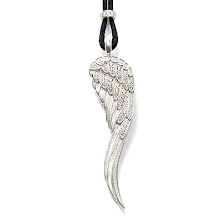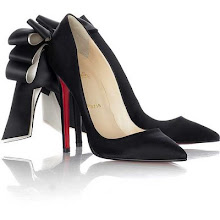Ballets Russes Intoduction from National Gallery of Australia on Vimeo.
One of the world’s richest collections of costumes from the famed Ballets Russes resides at the National Gallery of Australia and will be on display in December 2010 in this major exhibition. Through 140 costumes from 34 productions from 1909 to 1939, the vivid and innovative dance design of the early 20th century will be brought to life on the 100th anniversary of the Ballets Russes. The audience that gasped at the extravagant and sensual spectacle of its first performances could not have imagined the creative drama that was to envelop Diaghilev and his floating team of exiles for the next 20 years as they responded to some of the most turbulent times in history.
The Ballets Russes made its first appearance in Paris in the 1909 Saison Russe, a sensational season of dance organised by Diaghilev, a Russian-born impresario. The ballet integrated traditional dance narratives with modern design, folk art, contemporary music and new approaches to choreography. Raising every aspect of performance—dancing, choreography, music, stage and costume design and publicity—to an equal level of inventiveness and excellence, Diaghilev unleashed a torrent of creative activity on European theatre, placing the formerly moribund art of ballet into the Modernist framework of early 20th century design and culture.
He harnessed the new and powerful expressiveness of Post-Impressionism and the visionary elements of Cubism linking them to new forms of music built around atonalism and primitive rhythms. Russian designers Léon Bakst and Alexandre Benois provided the sumptuous and exotic spectacle of the first performances while other artists of the emerging Russian and European avant-garde joined Diaghilev—among them, Michel Larionov, Natalia Goncharova, Georges Braque, Pablo Picasso, Henri Matisse, Giorgio de Chirico, André Derain, Robert and Sonia Delaunay and Pavel Tchelitchev.
Composers Igor Stravinsky, Claude Debussy and Sergei Prokofiev gave new musical form to the Ballets Russes. Diaghilev employed some of the 20th century’s most innovative choreographers including Michel Fokine, Vaslav Nijinsky, Léonide Massine, Bronislava Nijinska and George Balanchine. Performances by émigré Russian dancers such as Vaslav Nijinsky, Tamara Karsavina and Adolph Bolm became legendary, with the male dancers bringing new, powerful energy to the stage.
Léon Bakst Tunic from costume for the Blue God c 1912 from Le Dieu Bleu
Many of the Gallery’s Ballets Russes costumes are associated with these performers and their potency is seen in the costumes worn by Nijinsky in the role of the Blue God in Le dieu bleu. In this costume of fascinating design and construction, traces of Nijinsky’s blue body make-up remain on its lining, capturing a physical and intimate moment of his commanding stage presence. Bearing the sweat of the dancers and the ravages of time, the surviving costumes are tangible reminders of the craft of their designers, makers and wearers.
The Ballets Russes productions had been conceived in the context of powerful and emotional artistic collaboration, and their costumes command attention as persuasive works of art in their own right, long after they ceased to be worn on stage. Bakst re-imagined the richness of Russian folklore and 18th-century France;
Goncharova’s seahorse costume evokes the fantastic underwater kingdom of Sadko; Larionov turned the Chout dancers into Cubist sculptures; Tchelitchev and André Masson imagined the future in Ode and Les présages while the oriental splendour of Matisse’s costumes for Le chant du rossignol were living calligraphy on stage.
Mikhail Larionov Costume for a buffoon's wife c 1921
All are shown in the dreamlike landscape of this exhibition, allowing us to experience the vision and passion of Diaghilev and his designers, dancers, collaborators and successors as they interpreted the great romantic stories and legends of history against the framework of the moral contradictions of the emerging 20th century.
Excerpt of the above article is from http://www.nga.gov.au/Exhibition/BALLETSRUSSES/Default.cfm?MNUID=6
Inspired by Creativity, Art, Fashion & Dance xoxo













